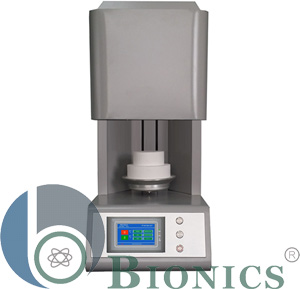Dental technology has advanced significantly, making dental restorations more precise, durable, and aesthetically pleasing. One of the most crucial tools in modern dental labs is the dental furnace. Whether you're a dental technician or someone curious about how dental prosthetics are processed, this guide will help you understand what a dental furnace is, how it works, and why it is essential in dentistry.
What is a
Dental Furnace?
A dental furnace is a high-temperature heating device used
in dental laboratories to process materials like ceramics, porcelain, and
zirconia. It is responsible for hardening, sintering, and glazing dental
restorations, ensuring they are strong, durable, and suitable for long-term
use.
These furnaces are primarily used for making dental crowns,
bridges, veneers, and other prosthetics. By precisely controlling temperature
and heat distribution, they help achieve the required physical and aesthetic
properties in restorations.
How Does
a Dental Furnace Work?
A dental furnace follows a controlled heating process to
transform raw dental materials into finished restorations. The basic operation
includes:
1. Preheating: The furnace gradually increases
the temperature to avoid sudden expansion and cracking of materials.
2️. Heating to the Desired Temperature: Depending
on the material, the furnace heats between 800°C - 1600°C to strengthen and
fuse the restoration.
3️. Glazing and Sintering:
For ceramic restorations, the furnace applies a glaze or sinters zirconia to
enhance strength and appearance.
4️. Controlled Cooling: The furnace carefully
lowers the temperature to prevent thermal stress and cracking.
Modern digital dental furnaces allow technicians to set precise
temperature cycles, ensuring consistency and high-quality results.
Key
Benefits of a Dental Furnace
·
Improves Restoration Strength –
High-temperature processing enhances durability for long-lasting crowns and
bridges.
·
Enhances Aesthetic Appeal – Ensures a
natural tooth-like finish with proper glazing and color matching.
·
Provides Accuracy & Consistency –
Digital controls allow repeatable, high-precision results.
·
Supports Multiple Dental Applications –
Used for ceramic firing, zirconia sintering, and metal processing.
·
Increases Efficiency in Dental Labs –
Automated heating cycles reduce manual labor and improve productivity.
Factors
to Consider When Choosing a Dental Furnace
When selecting a dental furnace, here are some important
aspects to keep in mind:
·
Temperature Control: The furnace should
offer a wide temperature range for different materials.
·
Heating Speed & Efficiency: Faster
heating cycles improve lab productivity.
·
User-Friendly Interface: Digital control
panels make it easier to set temperature curves.
·
Energy Consumption: Choosing an
energy-efficient model helps reduce operational costs.
·
Durability & Maintenance: A
high-quality furnace with a robust build ensures long-term performance.
Conclusion
A dental furnace is a fundamental tool for producing
high-quality dental restorations. From strengthening zirconia crowns to glazing
ceramic prosthetics, it ensures precision, durability, and aesthetic appeal.
Investing in the right dental furnace can enhance efficiency, quality, and
patient satisfaction in any dental laboratory.


Comments
Post a Comment